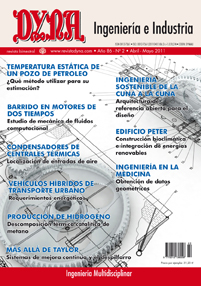ENERGETIC REQUIREMENTS OF HEAVY DUTY URBAN TRANSPORT HYBRID VEHICLES. ANALYSIS OF URBAN BUS AND WASTE COLLECT CASES IN TERMS OF USE AND ELECTRIFICATION DEGREE
Keywords:
vehículo híbrido, vehículo eléctrico, vehículo industrial, emisiones contaminantes, almacenamiento eléctrico.Abstract
The decomposition of the methane by means of a thermal and catalytic process (DTC) has been widely studied previously. The process to laboratory level, either in moving bed or fluidized bed, has been optimized, mainly with metallic catalysts, obtaining an efficiency of hydrogen production nearby to the maximum theoretically fixed by the thermodynamic, depending on the temperature of reaction. A rotary reactor designed by Inasmet-Tecnalia to carry out the process of Catalytic Thermal Decomposition (DTC) of methane has been investigated in order to achieve the COx-free production of hydrogen. The aim of the present work is to study the efficiency of this type of reactor, in a pilot scale, for a continuous production of hydrogen. A reactor such as, speci? cally designed, offers excellent fluidodynamic properties for the route DTC, though the optimization of the design in the scale that one has worked was not an object of the study. The trials, carried out in this reactor, allow the study of the influence of operating conditions such as the temperature reaction, the action of the different types of catalyst in the bed, the flow of methane, and the residence times, with a view to optimizing the parameters adjusted for the specific technology used. Likewise, there has been studied the nature of the carbon obtained as by-product with a view to his economic valorisation.The results have been compared with the best published information referred to the same process using traditional processes (fixed bed and fluidized bed). The result demonstrates that the process is highly competitive taking into account the methane conversion, turning out to be the most favorable for the economic reasons, the simplification of the process, and the facility of scale-up. Equally, the system permits continuous operation which is of special interest facing his transfer to the industrial tissue.Downloads
Published
2011-03-30
Issue
Section
ARTICULOS

